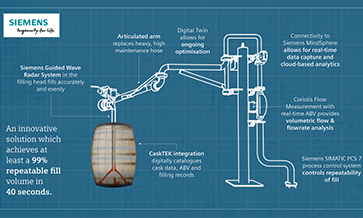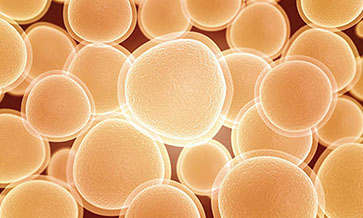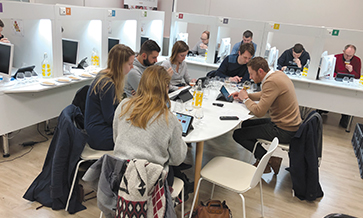One of the vital issues for any forward-looking brewery is this: how can I save energy throughout the production process in order to achieve a more sustainable footing? Brewnomic answers that question.
This concept, developed by Krones subsidiary company, Steinecker, enables a brewery to be energy self-sufficient by smartly recovering and using the residual materials from the brewing and filling processes.
Brewnomic consists of several modules, many of which relate to the brewing process. One of the modules is the Dynafill, which enables a multitude of savings – whether in terms of space requirements or energy consumption.
This new type of filling into a vacuum is the basis for other spin-offs and advantages. Taking a look at the conventional filling process is beneficial since it helps to understand the reasons behind the new one.
In a conventional filling process, the filling temperature, at around 6°C, is relatively close to the starting temperature of 1°C, at which most beers are stored. If a brewery were to increase the filling temperature, it would also have to provide for longer treatment times. As a consequence, conventional fillers would have to be significantly larger for the same output.
Filling into a vacuum, by contrast, combines a number of advantages. Firstly, the filling process is significantly shorter, taking a mere 0.5 seconds. And secondly, filling temperatures of up to 30°C are possible without the need for a larger filler.
More advantages
The smaller footprint is undoubtedly a benefit to brewers; but the warm-filling option offers additional advantages when it comes to upgrading sustainability levels. These include lowering water and heat consumption during bottle cleaning, and making filling possible to do without a tunnel pasteuriser.
The higher filling temperature shifts the difference between that of the cleaned empty bottle and the filling temperature. This means higher discharge temperatures at the washer are possible, and less energy is consumed in the washing process since the empty bottles do not have to be cooled down so much after washing.
When the filling temperature is low and the ambient temperature high, a warmer is needed to avoid condensation in the filled bottles. With warm filling in the Dynafill, a warmer can either be dispensed with entirely or used with significantly less energy for warming the bottles.
Filling and crowning the bottles in a single-process step reduces the microbiological risk of contamination in the filled but not yet crowned bottles. A flash pasteuriser in combination with the Dynafill is sufficient to ensure impeccable product quality.
Should pasteurisation be still necessary and/or desired, significant amounts of energy can be saved here as well, because the temperature difference between filling and pasteurisation temperature is substantially smaller, which means less energy is required for pasteurising.
Design possibilities
All of the above factors add up to a number of rewarding advantages. However, the principle of warm filling provides much more than “merely” saving valuable energy.
Thanks to a higher filling temperature, customers can invest and plan entirely new types of machine configuration within their kit – and thus come up with fresh line concepts.
This is because warmer and tunnel pasteuriser are no longer needed and the Dynafill takes up significantly less space than a conventional filler plus crowner. The combined machine’s footprint is substantially smaller since transfer sections and a separate crowner are dispensed with.
If there is a sudden machine stop, no emptying sections are needed at the conveyors downstream of the filler because only crowned bottles leave the machine. And with the vacuum-filling process, the higher temperature does not affect the filler size or the number of filling valves.
Factoring in all of these space-saving options opens up a whole new set of design possibilities for greenfield projects. Because the machine’s footprint is significantly smaller without impacting outputs, entirely new line and conveyor layouts can be planned.
Future-ready
Breweries considering the Dynafill to complement their existing filling line can also benefit from increases in output on the same, small line footprint. To put that in perspective, a conventional Krones Modulfill with a pitch circle diameter of 5,760mm and 176 filling valves would be needed for an output of 62,000 bottles per hour.
The Dynafill, on the other hand, requires a pitch circle diameter of 2,880mm and 96 filling valves for the same hourly output. On the shop floor, 60 square metres for the Modulfill compared with 30 square metres for the Dynafill means there is 50% less space needed for bottling and crowning alone.
Since the Dynafill entered the market at the international trade fair Drinktec in 2017 as a stand-alone innovation in the field of filling technology, Krones has not only continued to develop and improve the machine itself but also conceptually progressed its role in the bottling line.
Fitting in perfectly with a comprehensive approach to line planning, the Dynafill is integrated into a holistically conceived concept. Warm filling, in particular, offers huge potential here for re-using any energy released at another point in the production process.
Besides, for the brewing process itself in line with the Brewnomic concept, it would also be conceivable to use the surplus energy at another point in the filling process as cooling energy (in heat exchangers, for example) or for another purpose in the plant.













